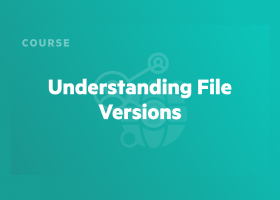Unleash the Magic of File Versions Content
What Is the Meaning of File Version?
File versioning is a software feature that saves multiple, separate copies of a file throughout its lifecycle. Files versions contain the history of a file. Each of the file versions includes the file’s content at specific points in time. This makes it possible to revert to previous file versions and compare changes to file versions if needed. File versioning is used to:
- Backup file versions
- Identify the point at which changes were made
- Record changes to file versions over time
- Recover file versions from accidental deletion, corruption, or overwriting

The need to access file versions crosses many use cases, which is why file versioning is built into software applications and hosted services. Solutions that often save file versions include word-processing applications, note-taking applications, software development tools, cloud storage services, and online backup services.
File versioning creates a new version of a file at set intervals. As new file versions are made, the original file is not overwritten. Instead, additional file versions are saved. The number of file versions created varies based on the application, service, and configurations set.
Four Document Version Control Best Practices
Document version control can be tricky. Following are four best practices to remember when working with file versions as well as a few additional considerations.
- Establish a universal standard for naming convention
- Communicate to team members when file versions are closed and what the current file versions are
- Use a single document to collect feedback and collaborate during the revision process
- Use file formats that are accessible to all users and specify style standards
1. Establish a universal standard for naming conventions for document version control
This should be the first step when setting up a document version control system and processes. The naming convention should consider the users and use cases to ensure that it can be effectively communicated to users, easily adopted, and consistently enforced.
Having naming conventions helps avoid common document version control pitfalls, such as:
- Confusion about which file versions are the latest
- Overwrites of a previous version of a document
- Reviewers giving or getting feedback on out-of-date file versions
- Time and money wasted
- Users frustrated
Rules of thumb for naming file versions include:
- Use names that clearly describe the document
- Use the same file name throughout the life of the document
- Use the same characters to separate words in the file name (e.g., spaces, dashes, or underscores)
- Use version numbers
- Use a consistent format for the version number of the file (e.g., v1 or V1)
The following are examples of good file version naming.
- Collateral Case Study Industry Customer Name YYMMDD v1
- Collateral-Case Study-Industry-Customer Name-YYMMDD-v1
- Collateral_Case Study_Industry_Customer Name_YYMMDD_v1
- Collateral_Case-Study_Industry_Customer-Name_YY-MM-DD_v1
Other recommendations for naming file versions are to:
- Avoid special characters (e.g., ~ ! @ # $ % ^ & * ( ) ` ; < > ? , [ ] { } ' " and |)
- Create a readme.txt file that explains the naming conventions and any acronyms used.
- Include any information that will allow other users to distinguish file versions from one another quickly
- Try not to make file names too long
2. Draw a clear line between versions so everyone knows when to stop giving feedback
If a project has a fixed number of revisions allowed, be sure to let team members know. This avoids problems such as:
- Clarifying when feedback stops, editing begins, and the revision period has closed
- Providing feedback on the wrong file versions
A few suggestions for maintaining clarity about file versions are:
- Notify reviewers when the feedback window is going to close and has closed
- Restrict the editing to comments
- Save a copy of the document before and use a new version for edits
- Set deadlines for feedback
3. Use a single document to collect feedback and collaborate during the revision process
Centralizing feedback from stakeholders streamlines reviews of file versions, reduces errors, and optimizes efficiency. Without a centralized approach, a number of issues are bound to arise, such as:
- Private replies with conflicting comments
- New version with a person’s comments/edits is shared with the team
- Comments are added directly to the new version, which loses some of the previous comments
To gather feedback centrally, insist that only comments provided in a single document (e.g., Google Doc, Microsoft Word doc, or PDF) will be considered.
4. Use file formats that are accessible to all users and specify style standards
Choose file formats that future users will be able to access at later dates. When possible, use open, non-proprietary file formats that will ensure that file content is accessible even when proprietary is not available. Tips for file formats for saving files are that they are:
- Adherent to an open, documented standard
- Fully published and available royalty-free
- In common usage by the user community
- Interoperable among diverse platforms and applications
- Non-proprietary
- Uncompressed
- Unencrypted
Additional Document Version Control Best Practices
- Appoint or hire an administrator to manage file versions
- Enforce access control for file versions
- Ensure that file versions are managed in accordance with compliance requirements
- Implement security protocols for all file versions
- Maintain the history of file versions
- Set up workflows to manage file versions
- Use watermarking to identify its status or version of file versions
Benefits of Version Control
Create backups, protect data, and track changes for file versions
- Create a backup of files and save file versions
- Provide a safety net in case of computer crashes or lost or stolen files
- Protect data from accidental loss or corruption
- Restore from a previous file version
Designate a branch to help developers and DevOps engineers to streamline merging and branching
- Enable team members to work simultaneously, focusing on separate streams of change
- Keep several streams of work separate
- Merge them back together to ensure that changes do not conflict
Help development teams keep track of changes made to code with file versions
- Enable determination of the true source of a given issue
- Generates new source codes
- Keep modifications on file for future use
- Maintain a record of the changes made in a particular code file
- Makes changes to the already existing code
- Work with historical code and to enable developers to predict future work with accuracy
Reduce error and duplication with file versions
- Eliminate errors caused by information displayed inconsistently across different file versions
- Enforce “read-only” for all file versions after the evaluation is complete to limit the possible modifications and mistakes in the future
- Prevent the collection of outdated versions of the same document
Stay compliant with regulations with file versions
- Accurate track changes to prepare records, files, datasets, or documents for compliance audits
- Keep a complete audit trail
- Maintain accountability for any changes
- Manage risk successfully
Use file versions to generate project reports for management
- Helps management identify issues that could be caused by changes
- How the changes will affect the document’s long-term objective
- Provide a thorough picture of how the project is doing
- Specify who is responsible for the modifications
Additional benefits of version control
- Allows users to quickly and easily find or track the latest file versions
- Creates immutable audit trails that provide evidence of how documents are created, revised, and updated over time
- Eliminates drafts and redundant versions, which reduces confusion, errors, and duplicates.
- Establishes authentic, complete, and reliable records by separating drafts and final versions
- Offers a systematic and consistent approach to file version management
- Reduces administrative costs
- Saves time
The Magic of File Versions Content Crosses Industries and Use Cases
File versioning is magical in terms of its bang for the buck. There are many use cases for managing file versions across industries, including the following:
- Content creators—helps manage file versions for copywriters, video producers, podcasters, and other content creators to help manage revisions, track file changes, and protect file versions.
- Creative teams—helps graphic designers, architects, and other creative professionals track iterations of designs in disparate file versions.
- Financial services—helps banks, accounting firms, and financial institutions manage financial file versions, including reports and statements.
- Legal and compliance—helps law firms and regulatory agencies manage file versions to keep track of case history and protect client data.
- Software development—helps teams collaborate, track changes to code, and recover file versions.
Regardless of industry, every organization can use file versioning to ensure the integrity and accessibility of file versions.
Egnyte has experts ready to answer your questions. For more than a decade, Egnyte has helped more than 22,000 customers with millions of customers worldwide.
Last Updated: 19th January, 2024


